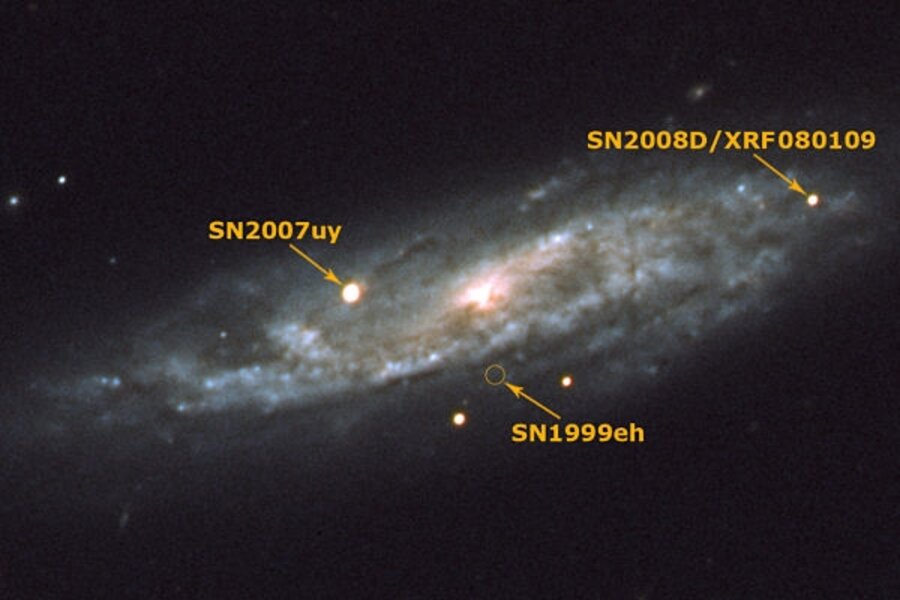Galaxy Zoo wants YOU for its supernova hunt!
Loading...
The good folks over at Galaxy Zoo are looking for volunteers. But maybe they need to give their new project its own name: Supernova Zoo.
In any case, astronomers are looking for volunteers to pore over images that might contain supernovae. These are stars that end their lives in violent explosions. All that's left is either a neutron star or a black hole.
Either way, the result is exotic.
A neutron star has about the sun's mass. But it's squeezed into an object only about 12 kilometers (nearly 7.5 miles) across. And a black hole, well, you know that one already -- an object whose gravity is so powerful that not even light, traveling at 186,000 miles a second, can escape. At least on a neutron star, the escape velocity is marginally more reasonable: roughly a third of the speed of light.
And the need for help is immense.
The GZ team has two telescopes at work. One to hunt for candidates, the other to conduct follow-up studies once supernovae are identified.
Step 1: Have the Palomar Transient Factory on California's Mt. Palomar supply images that they are taking for supernova-hunting purposes, as well as to spot other cosmic events that happen in a flash. The factory picks the best supernovae candidates for posting on the GZ's website.
Step 2: Get volunteers to sign up and hunt through the images on the website for evidence of the stellar explosions.
Step 3: The GZ astronomers then tap the 4-meter William Herschel Telescope in Chile to conduct follow-up studies, according to project director Chris Lintott, an Oxford University astrophysicist.
Unlike the original Galaxy Zoo project, here speed is of the essence. Astronomers can extract the most information about the supernova when they can track the evolution of its so-called light curve -- which rises, peaks, then tails off with time.
Ideally, astronomers would like to train Herschel on a supernova before it reaches peak brightness so they can follow the evolution of the light curve, which identifies the type of supernova it is (yes, there's more than one form of supernova).
By taking spectra of the light, easiest when it's at its brightest, they can identify the chemical elements the supernova has generated. These events seed interplanetary space with essentially all the elements heavier than hydrogen and helium.
And for a class of supernovae called Type 1A, they can also measure how significantly the light's spectra is shifted up or down the wavelength scale by the universe's expansion.
One 1A supernova is just as inherently bright as any other, making them valuable "standard candles" for calculating cosmic distances. Among their other accolades, they were the events that allows astrophysicists to discover "dark energy," a mysterious force that is increasing the pace at which the universe is expanding, when by all rights that pace should be slowing.
The Galaxy Zoo team is shooting for no more than a 24-hour turn-around between the time the Transient Factory uploads images to the time confirmed supernovae are sent to Herschel, Dr. Lintott explains in an email. In many cases, the time will be much less.
"This is the first time we've attempted this, and we expect to learn enough to make this a regular feature" of the Transient Factory's observing runs, he writes.





